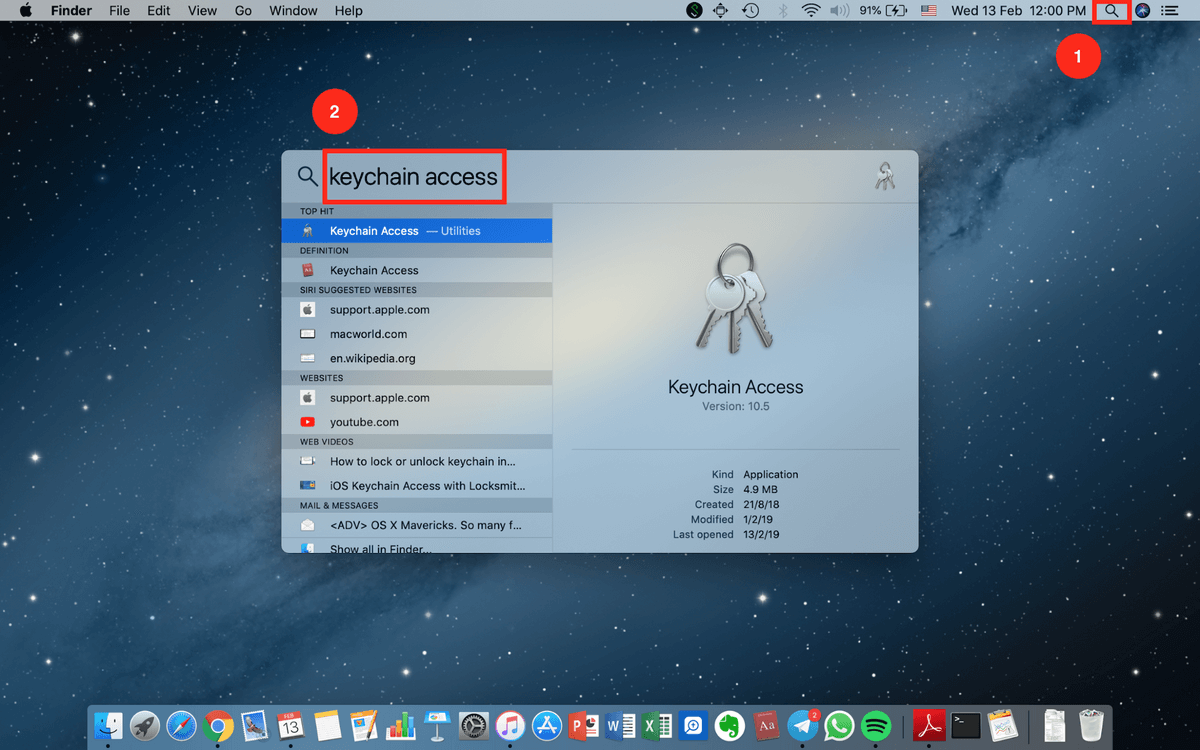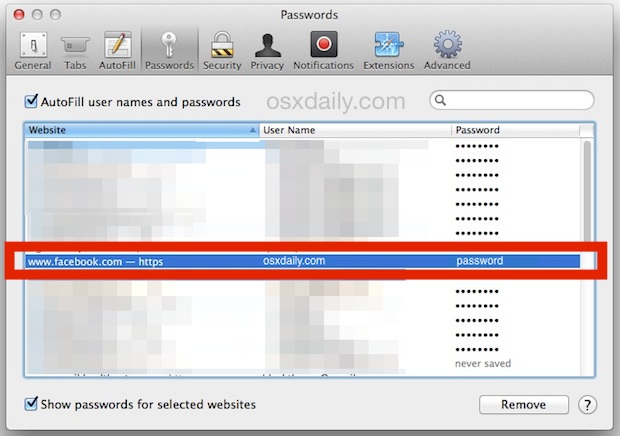- Passwords For Mac Os X 10.13
- Password Cracker For Mac Os X
- Forgot Password For Mac Os X
- Mac Os Password Reset
- Remove Password For Mac Os X

Here's a quick guide to what you can—and can’t—do with OS X’s passwords. Keychains are key Ever since Mac OS 8.6, the Mac has managed passwords with Keychain, Apple’s password-management. Fortunately, with Mac OS X’s built-in password manager, you can easily recover those lost passwords without having to bother with the password reset debacle. Use Keychain Access to search for. Learn how to fix a forgotten password on your Mac! This will work with any Mac OS X operating system, and will allow you to recover your password for your ac.
Mac OS is one of the most secured operating system provided by Apple. The protection mechanism is akin to all other operating systems, but the registry files accountable for creating the security barriers are a bit different, rather crude to bypass. So if you have forgotten your password on iMac or Macbook, it might be a bit difficult way ahead for you to access the system again if you don’t have the knowledge of the convoluted operating system.
Generally, besides login, Mac password is used for various other reasons, such as, during installing softwares, rendering serious changes in the system settings, or while deleting system files. But here we would confine our excursus on how to bypass the Mac OS password to gain access into the system. The discussion hereby would involve 3 essential methods which would help you inevitably to resolve your issue.
Method #1: Password Hint for Your Mac Login Password
Before you proceed with resetting your password anew, and replace it with a new one, you better try out the password hint which might refresh your memory after a while. In fact there is no limit to the number of times you can enter the password hint, and after 3 attempts Mac OS will provide you the password hint (Password Hint is a phrase or sentence extract which you had entered into the hint box while setting up the password in the first place). Infuse the steps mentioned below to carry out the method accurately:
Step 1. Firstly open “System Preferences” from the “Apple” logo.
Step 2. Select “Users and Groups” category.
Step 3. From the bottom left corner, click on the “Lock screen” icon.
Step 4. Press the “Return” key 3 times in a row. The screen will shake every time you press the “Return” key. After the third shake, the password hint will be displayed below the “Password field” which you can use to try out your luck.
The best part about this method is that there is no limit to the number of password trials, so you can keep trying until you get to recall it fully. But if the method is not helping you anyway, then you better skip to the next methods refined ahead.
For windows user: How to bypass Windows 10/8/7 login password
Method #2: Change Password from Another Account
If you have set up multiple accounts in your device, or share your device with another user which might have created another account in the same system, then you can use this separate account to change the password of your own locked down account.

The steps are laid out as follows:
Passwords For Mac Os X 10.13
Step 1. Click on Apple’s logo and then choose log out from the top left corner.
Step 2. Select an account you know the password to and enter the password thereby to gain access to the account.
Step 3. Go to “System Preferences” and click on the “Lock” icon at the bottom left corner of the screen.
Step 4. Enter your password again and then choose the specific account that you have forgotten your password for from the side pane.
Step 5. Now; click “Reset Password” and fill up the fields and the “Password hint” field.
Step 6. Finally click “Change Password”.
And you are done! You can now access the account with the newly created password.
Also read: 2 ways to boot your Mac into safe mode
Method #3: Use Recovery Mode to Recover Mac Password
Besides providing all the essential luster to the fundamentals of the operating system, Apple provides a tool, that is “Recovery Mode” for Mac OS or Mac OS X, depending upon which version you are currently using, you can use it to recover your forgotten Mac login or admin password.
Step 1. Press the power button of your device and while doing so press and hold the “Command-R”. This way Mac will boot into the Recovery Mode. Once the load bar is visible you can let go of your hold of the buttons.
Step 2. It will take a few minutes to load, and after it is loaded, choose the “Disk utility” and press “Continue”.
Step 3. Go to “Utilities” and then select “Terminal”.
Step 4. Now; in the empty field, enter “resetpassword” just in the exact manner and press “Return”.

Step 5. Choose the Volume which is your main hard drive containing the account.
Step 6. Now; select the account you wish to change the password of by “Select the User Account”.
Step 7. Enter your password and re-enter it for confirmation.
Step 8. Enter a password hint for future use and click “Save” to save the changes.
Step 9. A warning would appear notifying that the password has been changed but not the Keychain password. Click “Ok” to finish.
Step 10. Finally, click on “Apple” logo and then “Shut Down”.
Now, start your Mac OS and enter the previous account with the new password.
Conclusion:
As you can see all the mentioned methods above in the article are very easy to put to use if you have the basic expertise of how to handle an Apple device. Out of all the methods, recalling the password using Password Hint is a very tedious and time consuming method, and at some point of time may prove to be futile, thus Recovery Mode is the best option that you can heed to reset your forgotten password. Hope you had a great time knowing the ways to recover your login password on iMac or Macbook.
Password Cracker For Mac Os X
Read more:
The user account named ”root” is a superuser with read and write privileges to more areas of the system, including files in other macOS user accounts. The root user is disabled by default. If you can log in to your Mac with an administrator account, you can enable the root user, then log in as the root user to complete your task.
The root user account is not intended for routine use. Its privileges allow changes to files that are required by your Mac. To undo such changes, you might need to reinstall your system software. You should disable the root user after completing your task.
It's safer to use the sudo command in Terminal instead of enabling the root user. To learn about sudo, open the Terminal app and enter man sudo.
Enable or disable the root user
- Choose Apple menu () > System Preferences, then click Users & Groups (or Accounts).
- Click , then enter an administrator name and password.
- Click Login Options.
- Click Join (or Edit).
- Click Open Directory Utility.
- Click in the Directory Utility window, then enter an administrator name and password.
- From the menu bar in Directory Utility:
- Choose Edit > Enable Root User, then enter the password that you want to use for the root user.
- Or choose Edit > Disable Root User.

Log in as the root user
When the root user is enabled, you have the privileges of the root user only while logged in as the root user.
- Choose Apple menu > Log Out to log out of your current user account.
- At the login window, log in with the user name ”root” and the password you created for the root user.
If the login window is a list of users, click Other, then log in.
Forgot Password For Mac Os X
Remember to disable the root user after completing your task.

Mac Os Password Reset
Change the root password
Remove Password For Mac Os X
- Choose Apple menu () > System Preferences, then click Users & Groups (or Accounts).
- Click , then enter an administrator name and password.
- Click Login Options.
- Click Join (or Edit).
- Click Open Directory Utility.
- Click in the Directory Utility window, then enter an administrator name and password.
- From the menu bar in Directory Utility, choose Edit > Change Root Password…
- Enter a root password when prompted.
